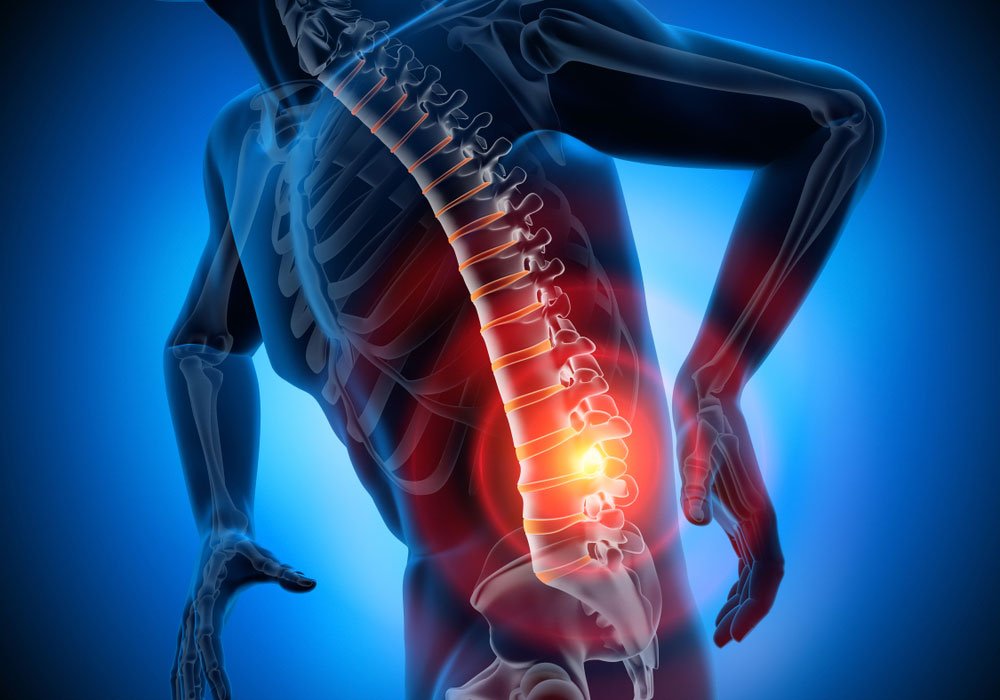
Spine injury refers to an insult to the spine resulting in damage to its components like bone ,ligaments and spinal cord nerves with or without associated neurological impairments.
Causes
The spinal cord transmits signals from the brain to the body’s other organs. The spinal cord is enclosed and safeguarded by layers of tissue known as the meninges and a column of vertebrae (spinal bones). The most common cause of spinal cord injury is an abrupt, severe impact to the vertebrae. The spinal cord and its nerves are therefore harmed by the fractured (broken) bones. Rarely, a wound can split or totally sever the spinal cord.
- Hard impacts and collisions in sports
- Automobile accidents
- Falls
- Hitting the head when diving
- Injuries from violent acts, such as gunshot wounds
Types of spine injuries
Cervical spinal injury – The top portion of the spine ,cervical spine injuries are closest to the brain and may affect the largest portion of the body , they tend to be the most severe type.
Thoracic spinal injury – The thoracic spine includes the upper and middle part of the back ,It often affects the muscles in the abdomen, legs, and lower back.
Lumbar spinal injury – The lumbar spine is the lowest major portion of the spine , A strain in the lumbar results in damaged tendons and muscles that spasm and feel sore.
Sacral spinal injury – The sacral spine is the area just above the tailbone. An injury to the sacral spine can cause some loss of function in the hips and legs. It may also affect bladder and bowel control. Extreme pain in the head, neck, or back weakness or inability to walk trouble breathing difficulty with balance and coordination numbness or tingling in the extremities loss of bladder or bowel control.
Long term symptoms – loss of movement of certain parts of the body ,loss of feeling or change in feeling, loss of bowel or bladder control ,pain in which can range from mild to severe ,Muscle spasms ,Abnormal reflexes ,loss of sexual function infertility, trouble walking or maintaining balance, difficulty breathing or coughing.
Signs and symptoms – The symptoms of a spinal cord injury vary from person to person.
Management -
Certain imaging tests can help diagnose a spinal cord injury:
X-rays – It can reveal vertebral (spinal column) problems, fractures or degenerative changes in the spine.
A CT scan can provide a clearer image of abnormalities seen on X-ray. This scan uses computers to form a series of cross-sectional images that can define bone, disk and other problems.
MRI – It uses a strong magnetic field and radio waves to produce computer-generated images. This test is helpful for looking at the spinal cord and identifying herniated disks, other masses that compress the spinal cord.
Treatment
How is an spinal cord injury treated?
SCI requires emergency medical attention on the scene of the accident or injury. After an injury, your head and neck will be immobilized to prevent movement. This may be very hard when you are frightened after a serious accident.
Specific treatment for an acute spinal cord injury is based on:
- Age, overall health, and medical history
- Extent of the SCI
- Type of SCI
- How you respond to initial treatment
- The expected course of the SCI
- Your opinion or preference.
Surgery is sometimes needed to evaluate the injured spinal cord, stabilize fractured backbones, release the pressure from the injured area, and to manage any other injuries that may have been a result of the accident. Your treatment may include:
– Observation and medical management in the intensive care unit (ICU)
– Medicines, such as corticosteroids (to help decrease the swelling in the spinal cord)
– Mechanical ventilator, a breathing machine (to help you breathe)
– Bladder catheter. A tube that is placed into the bladder that helps to drain urine into a collection bag.
- – Feeding tube (placed through the nostril to the stomach, or directly through the abdomen into the stomach, to provide extra nutrition and calories)
1 – Medications : Methylprednisolone (Solu-Medrol) given through a vein in the arm (IV) has been used as a treatment option for an acute spinal cord injury in the past. But recent research has shown that the potential side effects, such as blood clots and pneumonia, from using this medication outweigh the benefits.
Because of this, methylprednisolone is no longer recommended for routine use after a spinal cord injury.
2 – Immobilization : You might need traction to stabilize or align your spine. Options include soft neck collars and various braces.
3 – Surgery : Often surgery is necessary to remove fragments of bones, foreign objects, herniated disks or fractured vertebrae that appear to be compressing the spine. Surgery might also be needed to stabilize the spine to prevent future pain or deformity.
4 – Experimental treatments : Scientists are trying to figure out ways to stop cell death, control inflammation and promote nerve regeneration. For example, lowering body temperature significantly — a condition known as hypothermia — for 24 to 48 hours might help prevent damaging inflammation.
